My Best-Loved Flaky Pie Crust Recipe is so buttery and delicious! Learn how to make this pie dough perfectly every time with step-by-step instructions and tips.
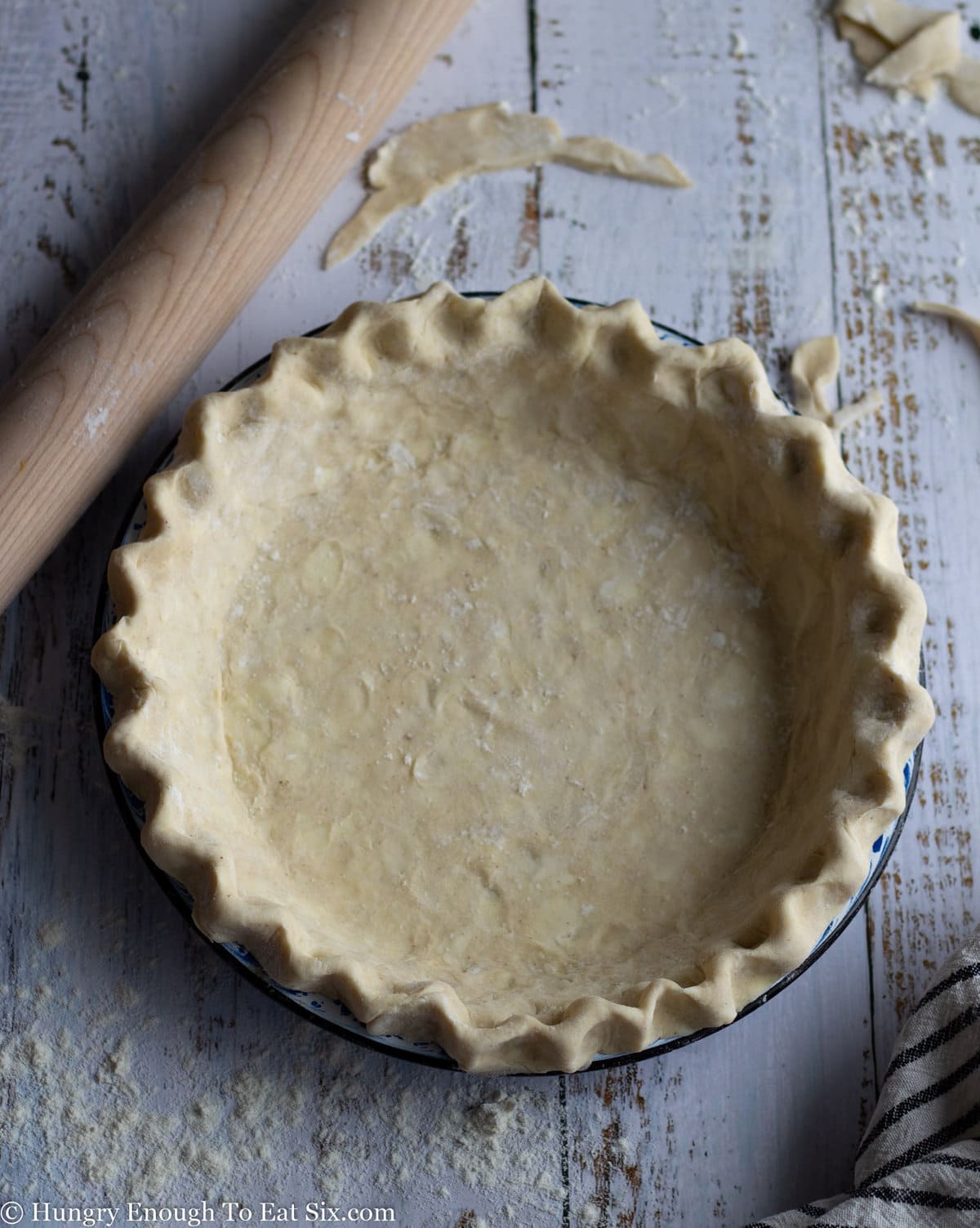
This post contains affiliate links and I may earn a small commission when you click on the links at no additional cost to you. You can read my full disclaimer here.
People often ask if I like to make pies. I do! Then many folks tell me that they won't make pie crust from scratch, because it looks waaay too hard and they don't dare try it.
I felt this way for a long while too, after a few early, failed attempts. No baker wants to let people down with a tough pie crust.
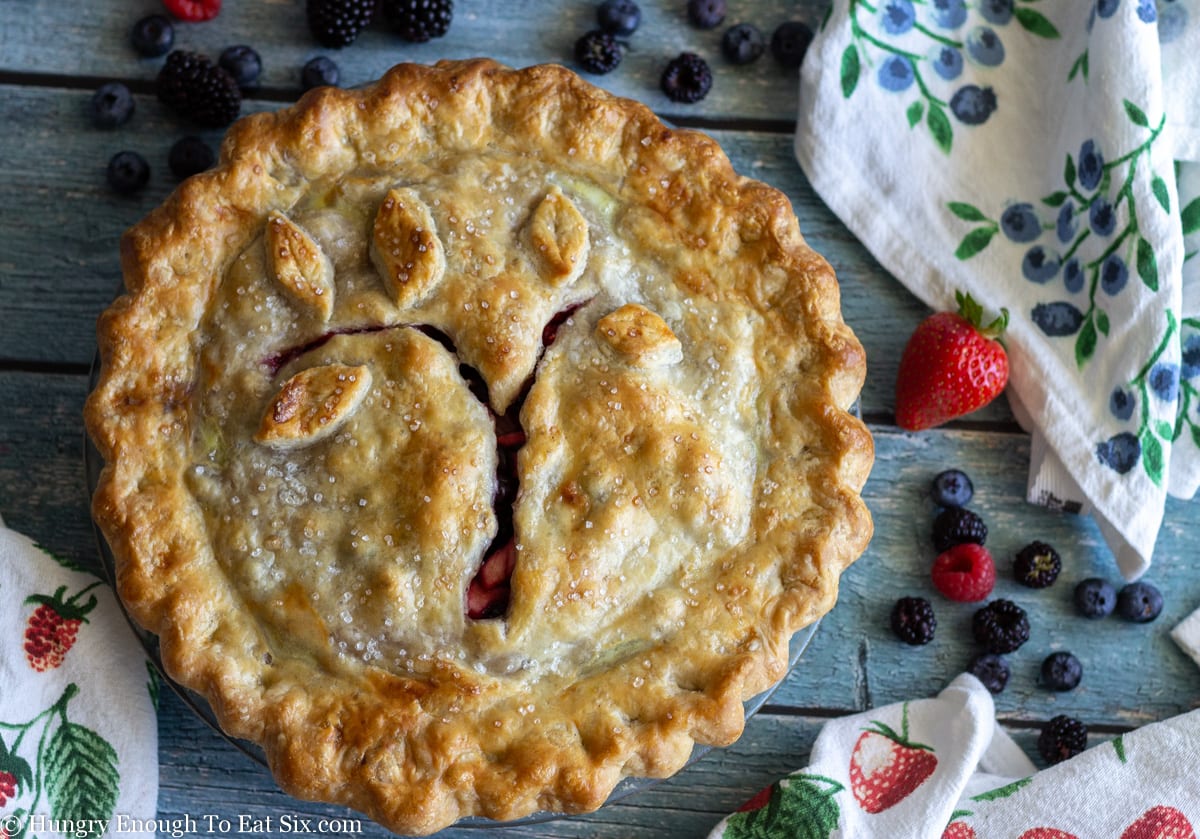
Then I took a pie class at King Arthur Baking Company in Norwich, Vermont. After learning from the pros, I no longer fear homemade pie dough. I learned the simple ingredients and straightforward technique of flaky, buttery pie crust.
Now I want to teach you!
Jump to:
- Why you'll love this butter pie crust
- What's the secret to a flaky crust?
- Butter Pie Crust Success Tips
- All butter crust vs. all shortening crust
- My favorite pie tools
- 🔪 How to make the Best-Loved Flaky Pie Crust Recipe
- Pie crust recipe notes:
- Flaky Pie Crust FAQs
- Pro Pie Baking Tips
- What pie recipes pair well with a flaky, buttery crust?
- 📖 Recipe
- 💬 Comments
Why you'll love this butter pie crust

A pie is more than just the filling. The best pie crust cradles and complements the filling with flavor and flaky texture.
This is why I love a homemade, butter pie crust. It has the most impressive, flakiest layers and the best flavor that comes from using sweet, pure butter.
An old-fashioned butter pie crust dough is delicious with any filling, sweet or savory. My flaky pie crust recipe goes a step further with a hint of cinnamon and vanilla in the dough. They're a perfect match to any sweet filling.
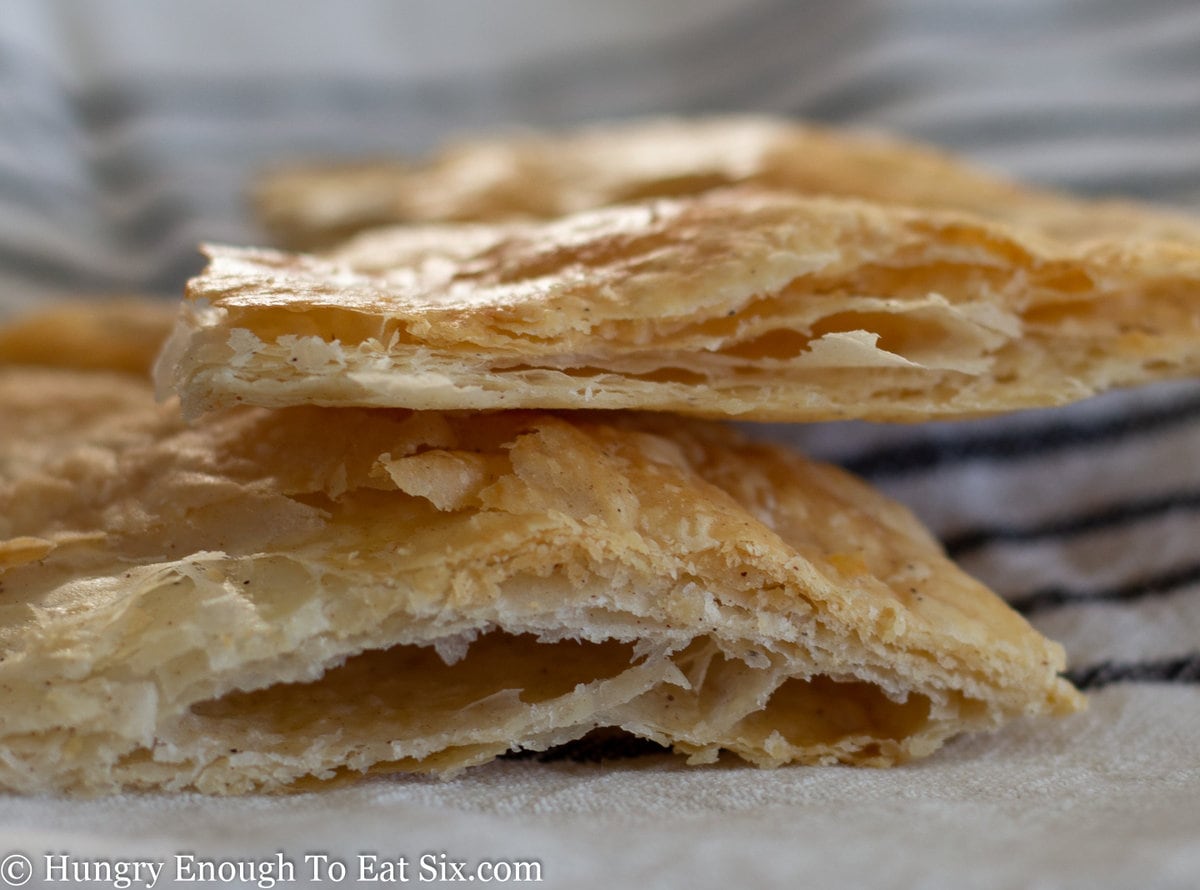
What's the secret to a flaky crust?
Cold butter is the secret to a flaky crust. When the dough is rolled out you should be able to see little pieces of butter suspended throughout. As the butter pie crust bakes, the water in those butter pieces turns to steam, puffing up the crust to create layers and flakes.
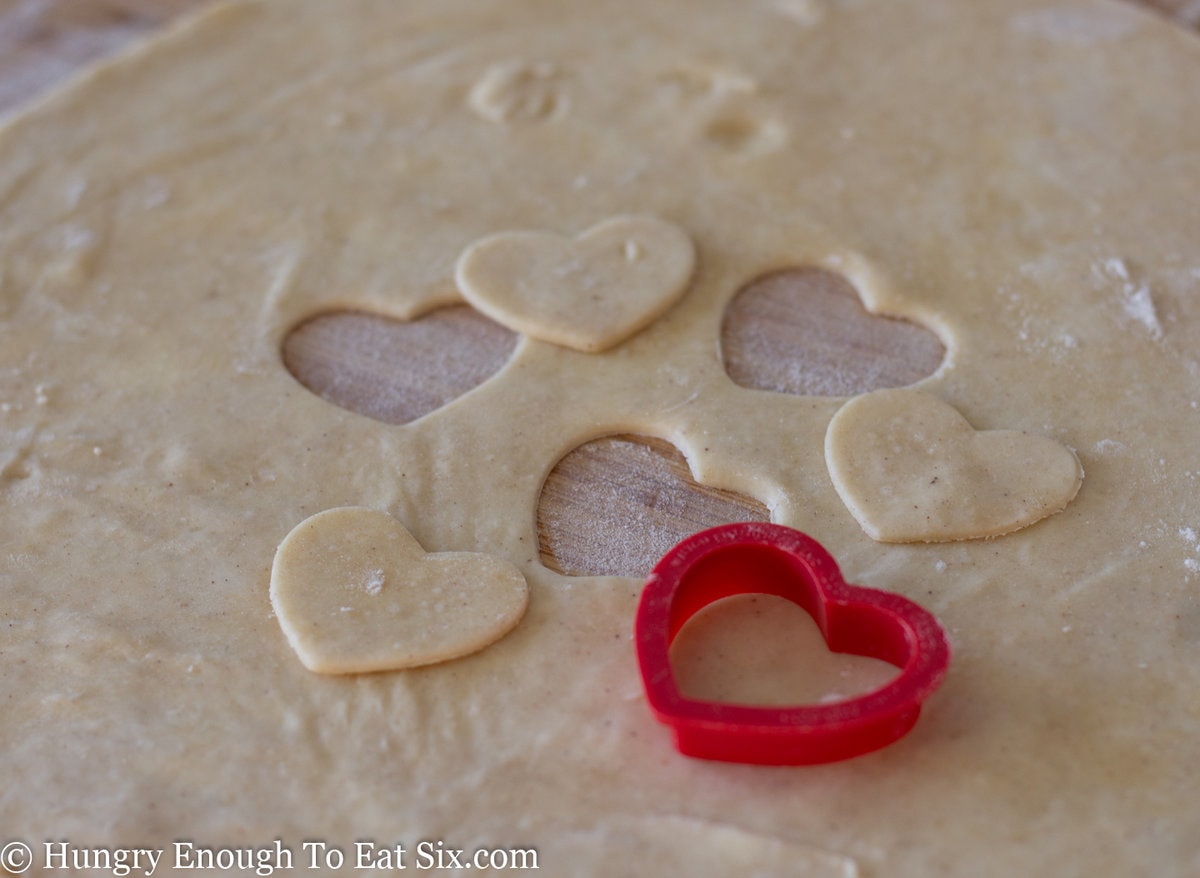
Butter Pie Crust Success Tips
- Cold Butter: This is the most important part of an all-butter crust. Keep your butter in the fridge until you need it. The finished dough also needs to stay cold.
- Be organized: Have a clean work surface to mix and later roll out dough. Have your flour, spices, measuring cups, spoons, etc. ready.
- A light touch: Overworked dough leads to tough pie crust. Knead your pie dough just a few times, then stop.
All butter crust vs. all shortening crust
There are pros and cons to both types of pie crusts. An all-butter pie crust has incredible flavor from the butter as well as flaky, crispy layers. It's important to keep the butter and dough cold, otherwise, the dough will get sticky and tough.
Shortening crust is easier to work with and creates a crust that is tender. However, it won't have the flavor or the flakiness of a butter crust.
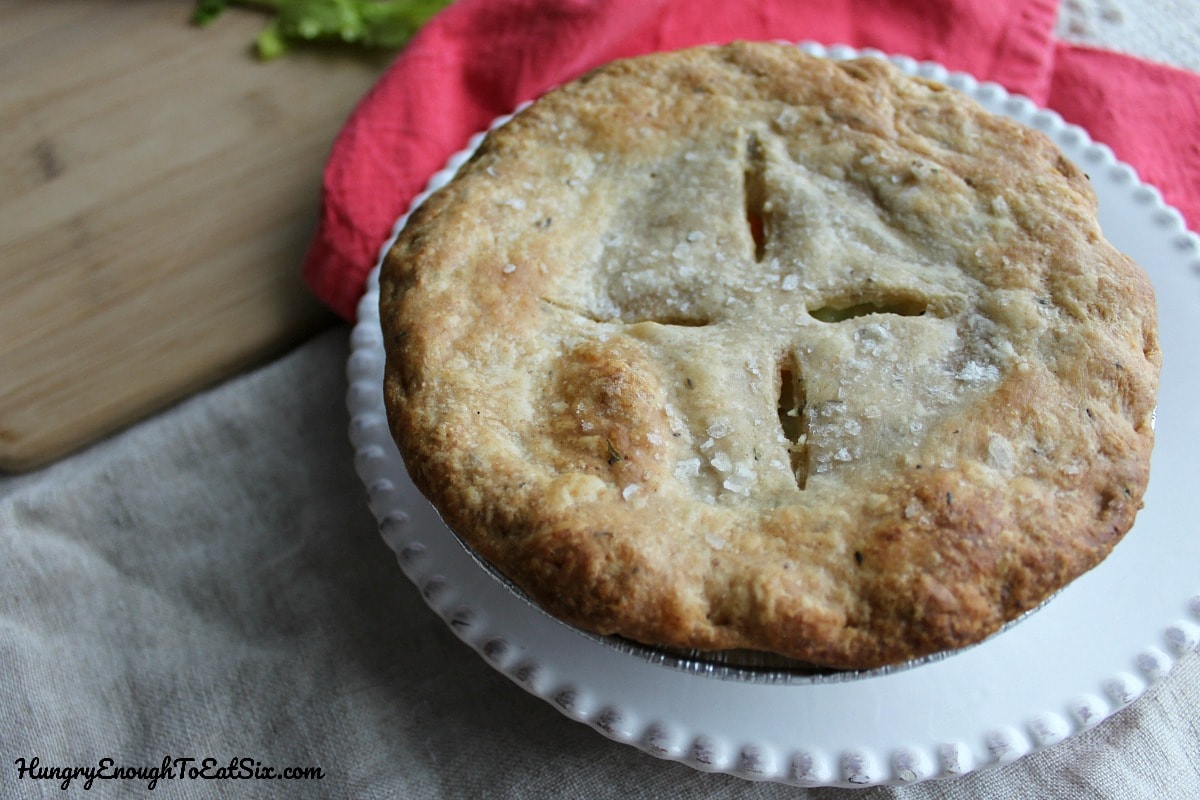
Making a savory pie? Use my variation to swap the sweet spices for savory ones, and you're golden.
My favorite pie tools
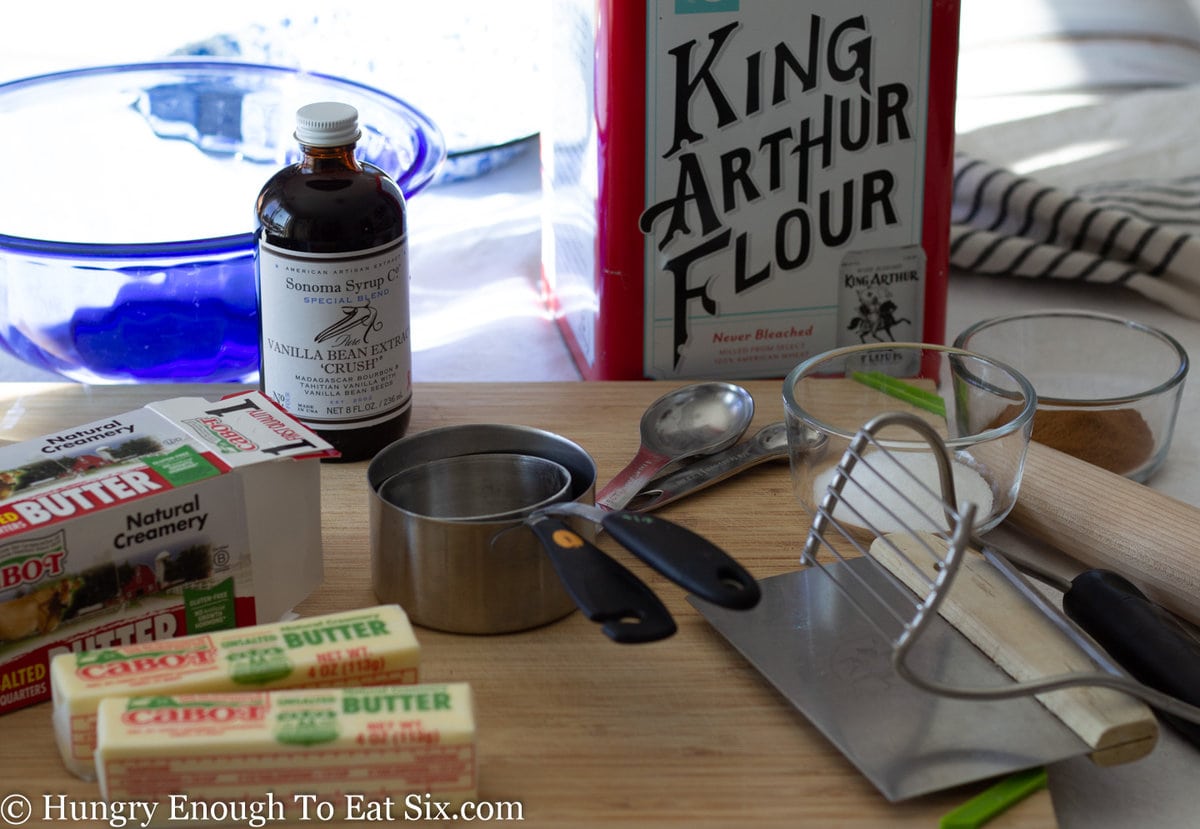
These are my go-to tools whenever I make pies.
- Pastry blender: To cut butter into the flour, this tool makes it easy.
- Bench scraper: This flat tool gets underneath and moves even sticky doughs.
- Rolling pin: My choice is the long, tapered, French rolling pin.
- Pastry Guide: This guide helps you cut out dough that's the right diameter for your pie pan.
- Metal Pie Pans: Metal pie pans conduct heat more evenly and more reliably cook the crust all the way through.
- Pie weights or dried beans: A must for blind-baking a pie shell. You can buy metal or ceramic pie weights, but cheap, dried beans work just as well.
- Pie Shield: Made from aluminum or silicone, the shield protects the pie edge. You can also use aluminum foil.
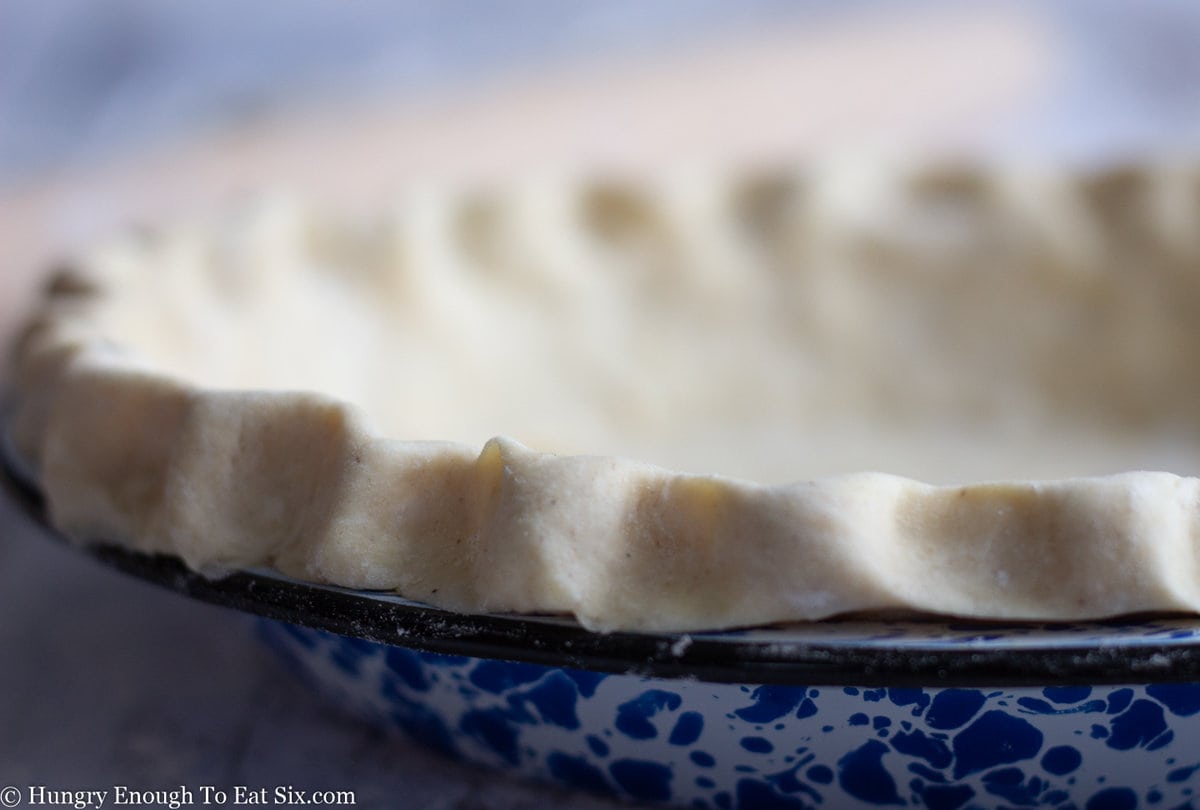
🔪 How to make the Best-Loved Flaky Pie Crust Recipe
Ingredients
- All-purpose flour: King Arthur Flour is the brand I recommend. All-purpose flour hits the sweet spot of making a dough that's tender while also being easy to work with.
- Salt: A little salt in the dough adds flavor.
- Cold unsalted butter: Use a good quality butter like Cabot.
- Ice water: Use this to hydrate your dough while keeping it cold.
- Vanilla extract: Optional, but it adds great flavor to crusts for sweet pies.
- Cinnamon: Optional, but it's really delicious in pie crust.
Step 1: Get organized
Have a large, clean surface. Set out your ingredients and tools. Place a cup of cold water in the fridge and add a few ice cubes.
Step 2: Combine the dry ingredients
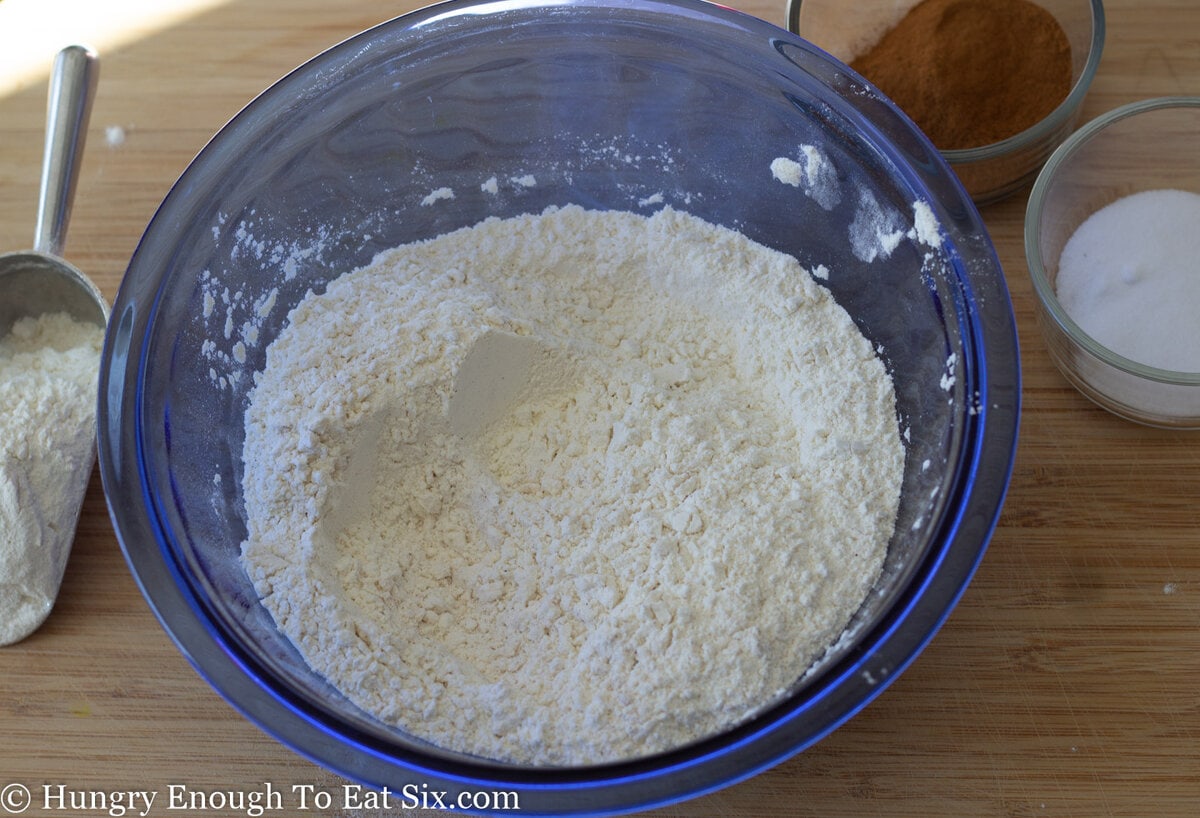
Measure the flour, salt, and cinnamon into a large bowl and mix them together.
Step 3: Cube the cold butter
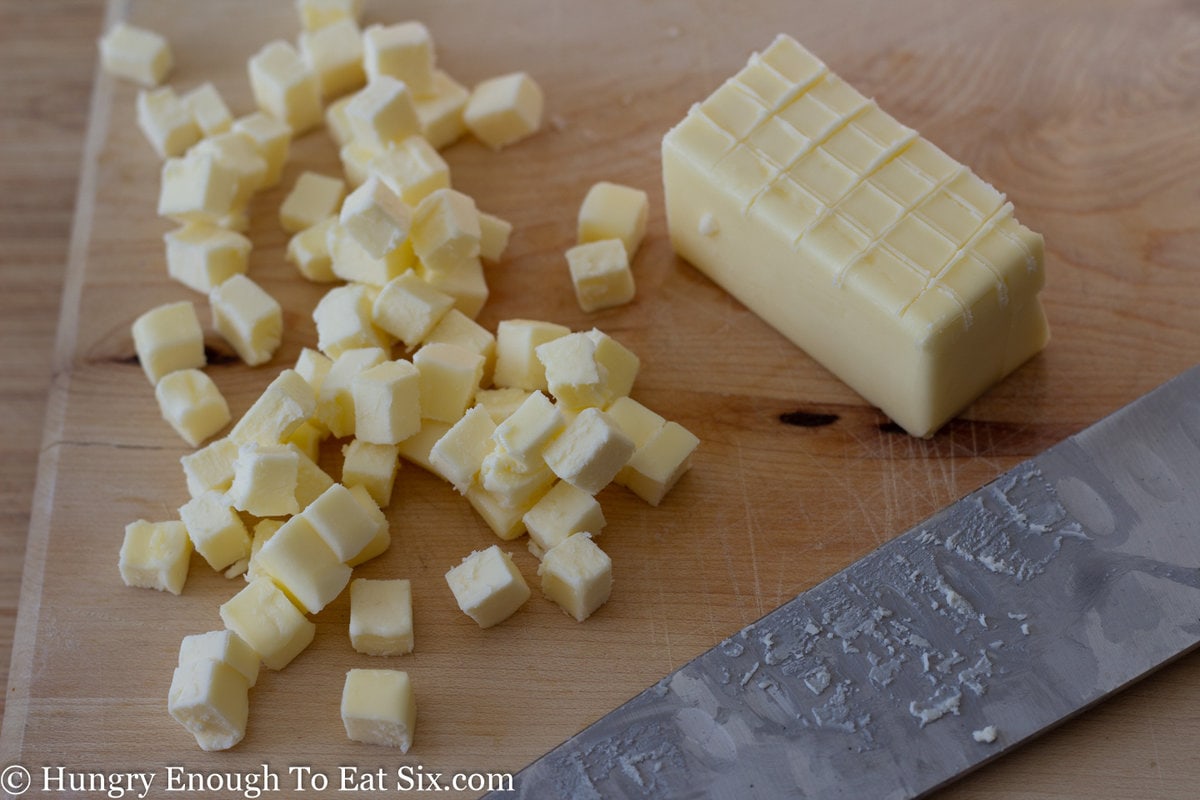
Slice your cold, cold butter into small cubes. Add them to the bowl and toss them with the flour mixture.
Step 4: Cut butter into flour mixture

Use your pastry blender to cut the butter into the dry mixture. Keep doing this until the mixture has a shaggy, crumbly look. The butter should be cut into tinier pieces now—if any larger ones remain, squeeze them between your fingers.
Step 5: Slowly add ice water and vanilla
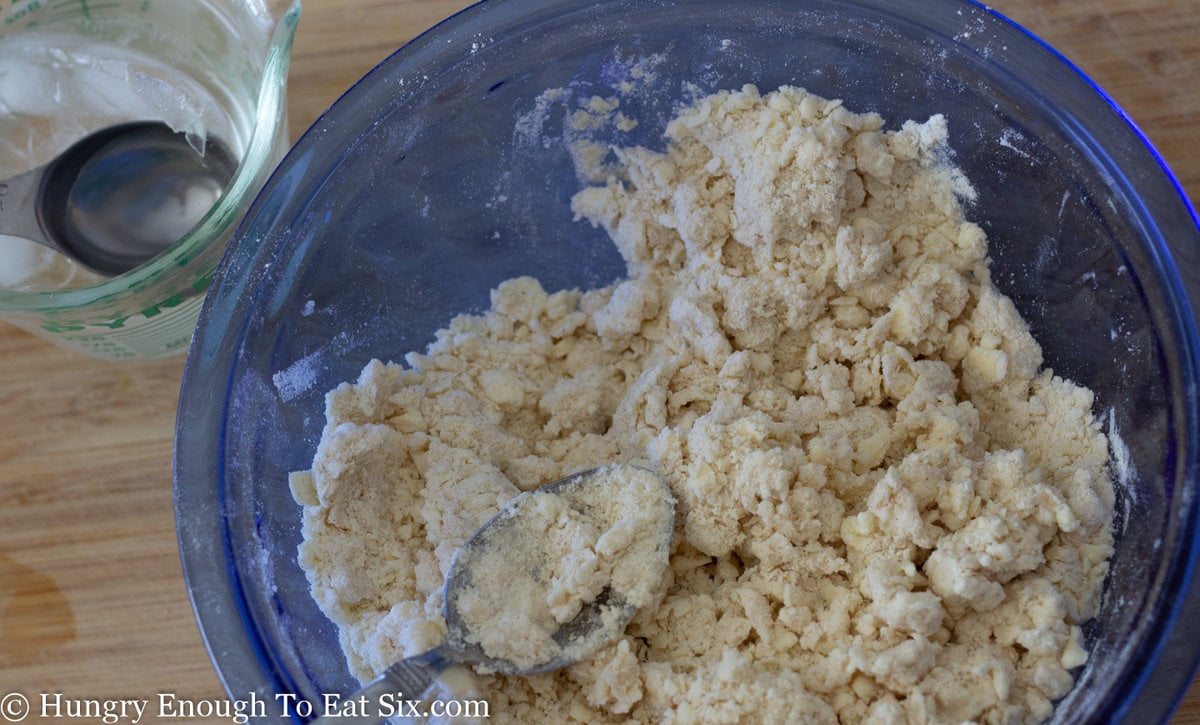
Add in the vanilla, then get your ice water from the fridge and add it slowly to the bowl a tablespoon at a time. Stir after each addition. As the ingredients begin to clump together, reach in and squeeze a handful of the mixture together. When it holds together with few, dry crumblies, it's ready.
Step 6: Pull it together.
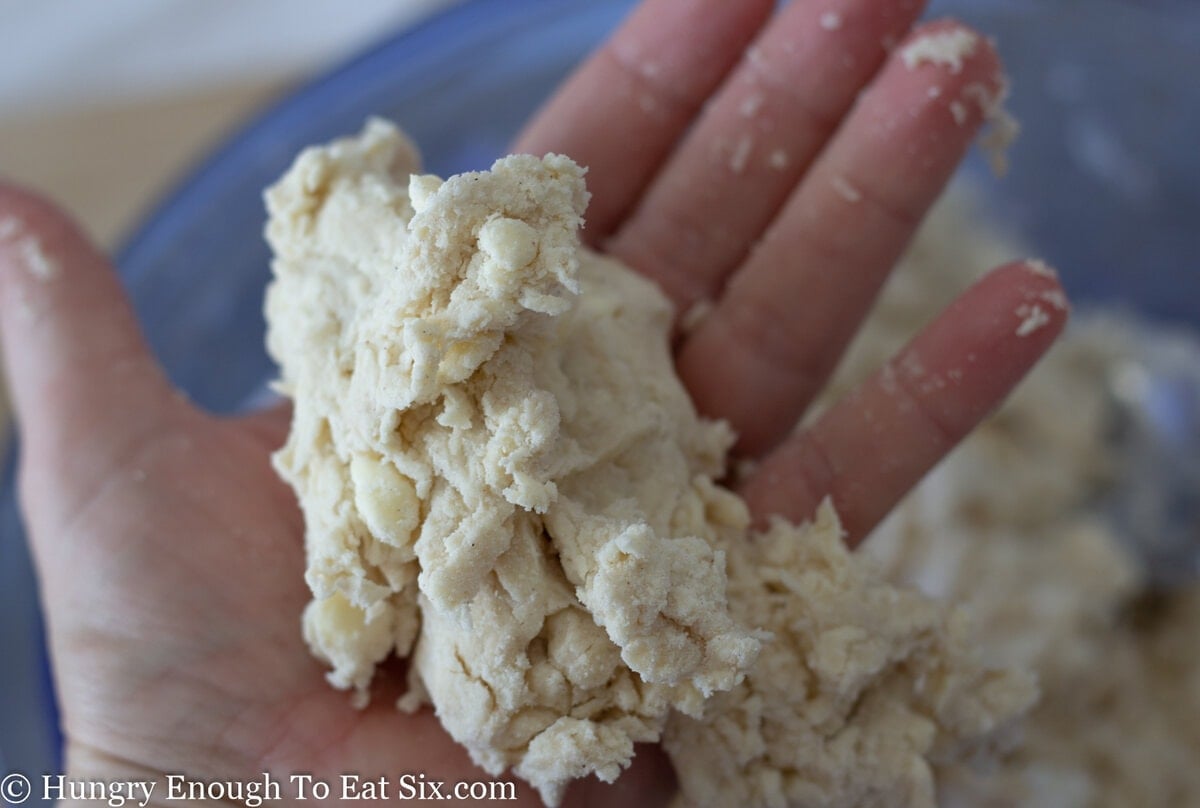
Pour out the bowl onto your work surface. Bring your hands around the pile and squeeze it together a few times, gathering up the drier bits from the bottom. Use your bench scraper to scrape it up and over, then press it down. Lightly knead it this way just a few times until the dough has come together.
Here's a video of this step!

Step 7: Divide the dough and chill.
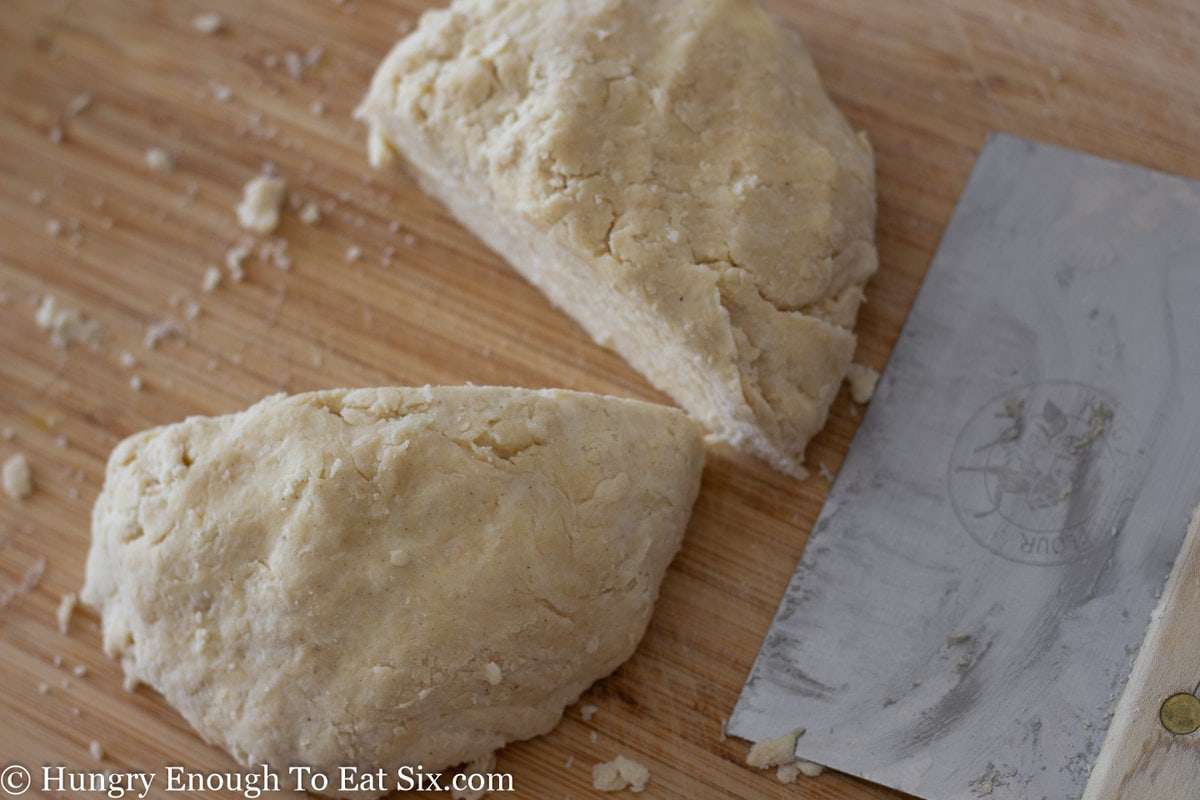
Cut the dough in half. Shape each portion into flattened disks, and wrap them in plastic wrap. Refrigerate the dough for 30 minutes. Then it is ready to be rolled for your pie.
Pie crust recipe notes:

- Butter: Use a good-quality, unsalted butter: this is a recipe where the flavor really gets to shine. I like Cabot and Kerrygold unsalted butter.
- Water: How much water you add will depend on how dry or humid the day is. Start by adding four tablespoons, stir, then add water one tablespoon at a time until you can squeeze a handful of dough together.
- Cold: Keep the butter very cold until you need it. If the dough gets warm or sticky while working with it, cover it loosely and chill it for 10-15 minutes.
- Puffing: This butter crust puffs up a lot during baking, giving pies a rustic look. This dough will work with simple cut-outs and lattice tops, but very intricate cut-outs may lose their definition. Chilling the pie before baking will help minimize this. You can also use a dough made with all or half shortening for intricate pies.
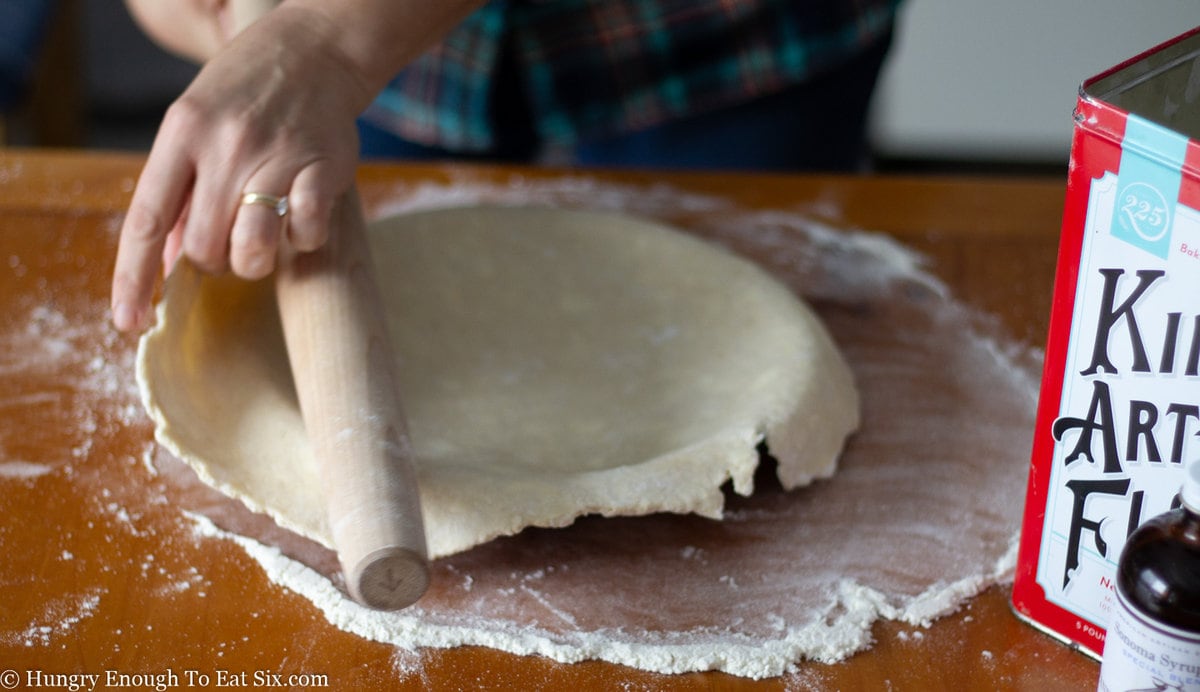
Flaky Pie Crust FAQs
This process cuts butter into tiny pieces in the flour. Drop small cubes of butter into your flour, then use a pastry cutter tool like this one: press it with a slicing motion through the butter to break it down. You can also use a fork in each hand to pull the butter into pieces. You can even squeeze butter chunks between your fingers to break them down, but don't let the butter get too warm.
Check if the dough is getting too warm—if it is, pop it in the fridge for a short time to firm it up. If it's still sticky, add a light dusting of flour to your work table and rolling pin. When you roll the dough, pick it up and rotate it so that it won't have the chance to stick.
This means it needed a little more ice water during the mixing stage. Sprinkle some ice water over the surface and try rolling again.
If a lot of butter is leaking from your pie crust, that means that the dough was too warm when you put it in the oven. It's important to keep butter cold when making your pie crust dough and to keep your pie dough cold right up until the moment it goes into the oven.
There are a few reasons why pie crusts shrink during baking: overworked dough, not enough support during blind baking, and too much water in the dough. Some ways to prevent this are to make a thicker pie crust edge that stays in place, to freeze your pie crust after rolling it (to firm up the butter in the dough,) and to use pie weights when baking your pie shell so it can't slump down.

Pro Pie Baking Tips
- Lower the oven rack: The bottom of the pie pan will be closer to the heat source. This helps your bottom crust cook through and prevents the top of your pie from browning too quickly.
- Add an egg wash: A blend of egg and water brushed onto the crust gives it a lovely shine.
- Sprinkle sugar or salt on the crust: Granulated or decorating sugar sprinkled on a sweet pie makes it look dazzling. For savory pies, add a sprinkle of flake salt like Maldon's sea salt flakes.
- Bake at a higher temp to start: For the first 20 minutes bake the pie at 400° F, then reduce the heat to 350° F to finish baking. This hotter initial burst helps the crust puff up to make those beautiful layers.
What pie recipes pair well with a flaky, buttery crust?
This pie crust honestly takes amazing will all kinds of pies, sweet and savory alike. Here are are few suggestions:
My hungry fans love this pie crust because it tastes just as good as the filling it holds.
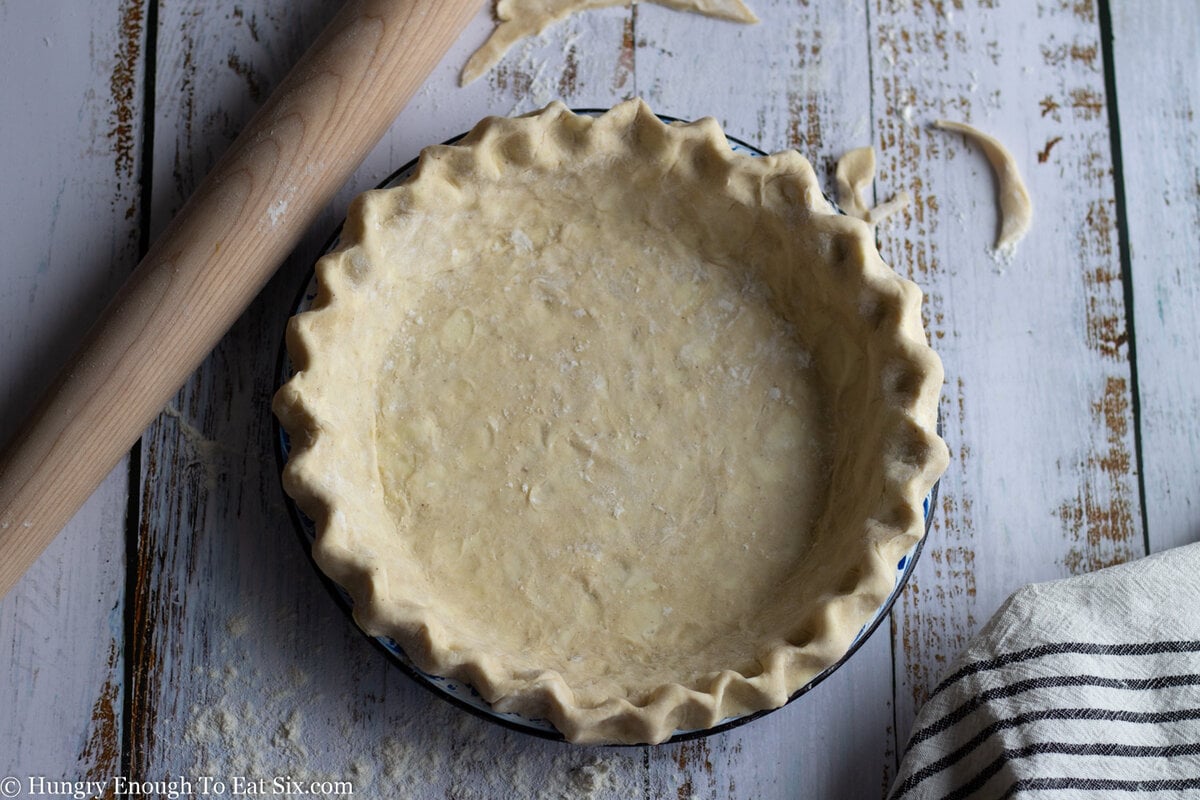
The Flaky Buttery Pie Crust recipe and tutorial is below!
💬 Have you tried this flaky pie crust dough? Leave a comment.
📖 Recipe
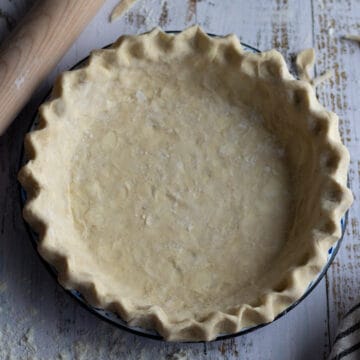
Best-Loved Flaky Pie Crust Recipe
Equipment
- Large bowl
- Sharp knife
- Pastry cutter
- Rolling Pin
Ingredients
- 2½ cups all-purpose flour, unbleached (10.63 ounces)
- 1 teaspoon salt
- ¼ teaspoon ground cinnamon (optional)
- 8 ounces unsalted butter, cold (1 cup or 2 sticks)
- 1 teaspoon pure vanilla extract (optional)
- Ice water
Instructions
- Have your work area ready before starting: a clean area large enough to roll out the dough. Have ingredients and tools set out and ready to go. Keep the butter and ice water in the fridge until you need them.
Combine the dry ingredients:
- Combine the flour, salt and cinnamon (if using) in a large bowl.
Cut in the butter:
- Slice the cold butter into very small cubes—about ¼-inch sized. I like to slice the butter lengthwise into 3 planks, then cut these into 4 sticks, and then cube them.
- Add these to the flour mixture. Break them apart and toss them until they're coated.
- Work the butter into the flour using a pastry blender until the mixture is shaggy and crumbly. If any larger pieces of butter remain, flatten them between your fingers.
Add the liquids:
- Add the vanilla extract (if using) to the bowl. Then add 4 tablespoons of the ice water to the mixture and use a spoon to toss it together.
- Add another tablespoon of ice water and stir it again. Continue adding ice water one tablespoon at a time and stirring until the dough starts clumping together. (On dry days you'll need more water, on humid days you'll need less.)
- Squeeze a handful of the mixture: if it holds together with little to no crumbliness it's ready—stop adding water.
Give it a few squeezes:
- Turn the contents of the bowl out onto a lightly floured surface. Squeeze the pile together with your hands a few times, gathering up the dry bits from the bottom.
- Use your bench scraper to get under the pile: pull the mixture up and fold it over the top. Flatten it with your hands and then repeat. Do this 4-5 times until the dough has just come together. Do not overwork the dough.
- (There will be pieces of butter visible in the dough, which is good: that's what will make a flaky crust.)
Divide and chill:
- Divide the dough in half. Flatten each half slightly with the palm of your hand and wrap the disk in plastic wrap. Chill the dough disk in the fridge for 30 minutes or until firm.
- This recipe makes enough dough for 1 double-crust pie or 2 single-crust pies, about 24 ounces of dough.
TO STORE YOUR DOUGH:
- Refrigerate: Wrapped disks of dough can be kept in the fridge for up to three days. The dough will be very hard. To make it workable, bang it with a rolling pin to help soften the dough.
- Freeze: Wrap the dough disks well and freeze them up to 1 month. Let frozen dough thaw in the fridge.
OPTION: MAKE IT WITH A FOOD PROCESSOR:
- After combining the dry ingredients pour them into the bowl of a food processor. Cube the butter and add this in.
- Pulse the food processor several times until the butter has been cut into the dough. It should have a shaggy appearance.
- Add the vanilla (if using.) With the food processor running on low, spoon the ice water in a tablespoon at a time. Continue adding tablespoons of water until the dough JUST comes together.
- Turn the dough out of the food processor and squeeze it together one or two times. Divide and refrigerate it as instructed above.
VARIATION: FOR SAVORY PIES
- For a dough that tastes wonderful with savory pie fillings, omit the cinnamon and vanilla. Add a teaspoon of crushed thyme to the dry ingredients before cutting in the butter.
HOW TO ROLL OUT THE DOUGH:
- Take a chilled disk of dough from the fridge. Set it on a floured work space and sprinkle a little flour over the top.
- Place your rolling pin in the middle of the dough and roll towards the outer edge. Pick up the dough and rotate it a quarter-turn. (Don't flip it: keep the same side up the whole time.)
- Dust a little flour under it if it's sticking. Roll the dough again starting in the center and rolling towards the outer edge.
- Continue rolling this way and rotating the dough after each pass, until you have a large enough circle and the dough is about a ¼-inch thick.
USING THE DOUGH
To fit the dough into your pan:
- Cut out a circle large enough for your pie pan. Gently drape an edge over your rolling pin, then use the pin to lift the dough up and into your pan.
- Press it in along the bottom and sides leaving an overhang all around. Lightly cover this with plastic wrap and pop it in the fridge while you prepare the top crust.
To blind-bake a pie shell:
- Once you fit the bottom crust into the pan, roll the edge under and crimp it firmly down to the edge of the pan.
- Gently press a piece of foil or parchment paper into the pie shell, then fill it with pie weights or dried beans. Refrigerate the shell for 30 minutes while preheating the oven to 375° F.
- Bake the shell for 20 minutes. Remove the pie weights and foil/parchment. Prick the bottom and sides of the shell all over with a fork.
- For a pie that you will bake after filling: bake the shell for 5 minutes longer, then remove from the oven and allow to cool.
- For a pie that does not get baked again: bake the shell for 10 minutes longer until it is golden-brown all over. Remove it from the oven and let it cool completely.
To add a top crust:
- Once the cooled filling has been added to the bottom shell, roll out the top crust using the same technique you did for the bottom crust (roll from the middle, quarter-turn after each pass.)
- Cut out the circle size appropriate for your pan. Make any decorative cut-outs in the dough now. Use the rolling pin to gently lift up the dough and drape it over the top of your pie.
- Roll the edge of the top crust under the edge of the bottom crust, and do this around the entire pie. Firmly crimp the edge down to the rim of the pie pan. Lightly cover the pie with plastic wrap and refrigerate it for 30 minutes before baking.
Notes
- The prep and chill times are for making the dough only. Plan extra time for rolling dough and making your pie.
- This all-butter crust puffs up a lot during baking. Very intricate cut-outs may lose some definition.
- Cold butter is the most important part of a successful pie crust. Keep your butter in the fridge until you need it.
- Based on techniques I learned at the King Arthur Flour Education Center.

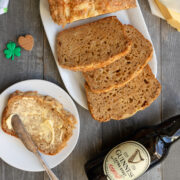

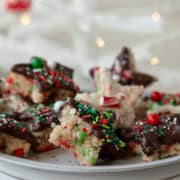

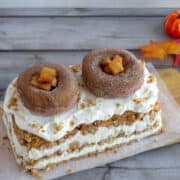
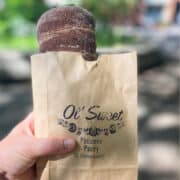

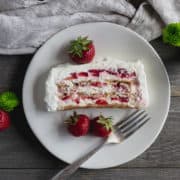
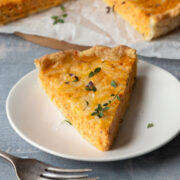
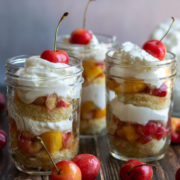


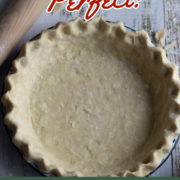
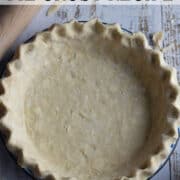
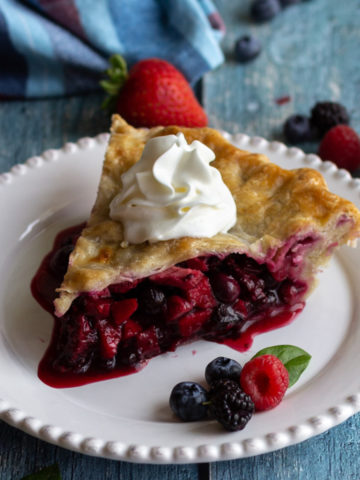
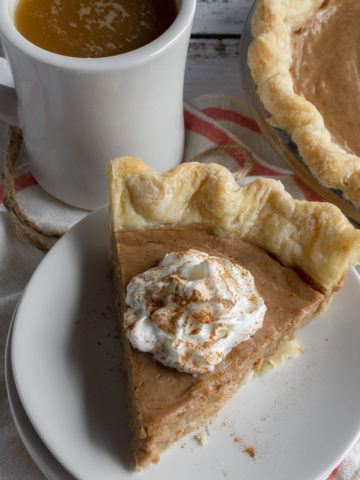
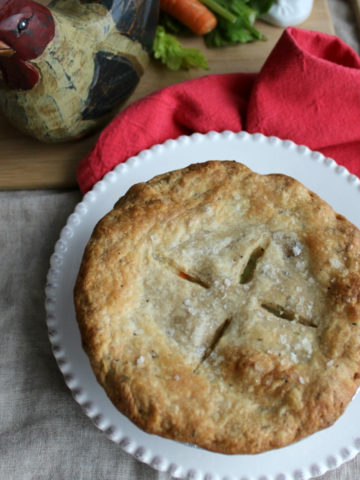

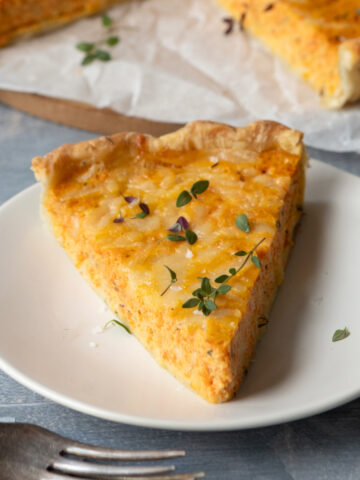
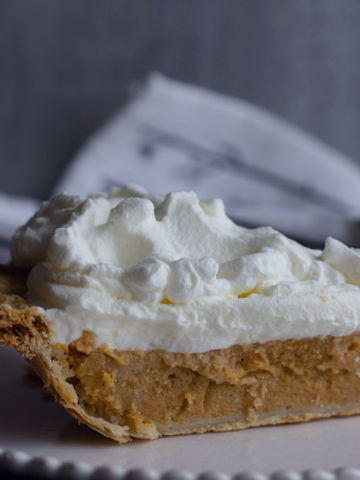
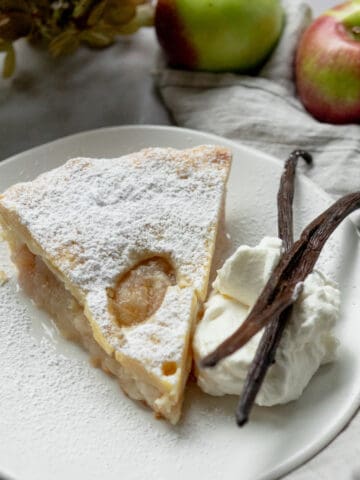
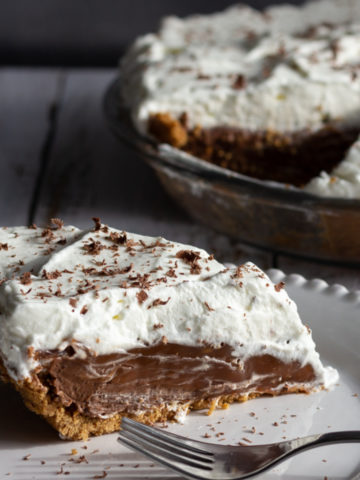
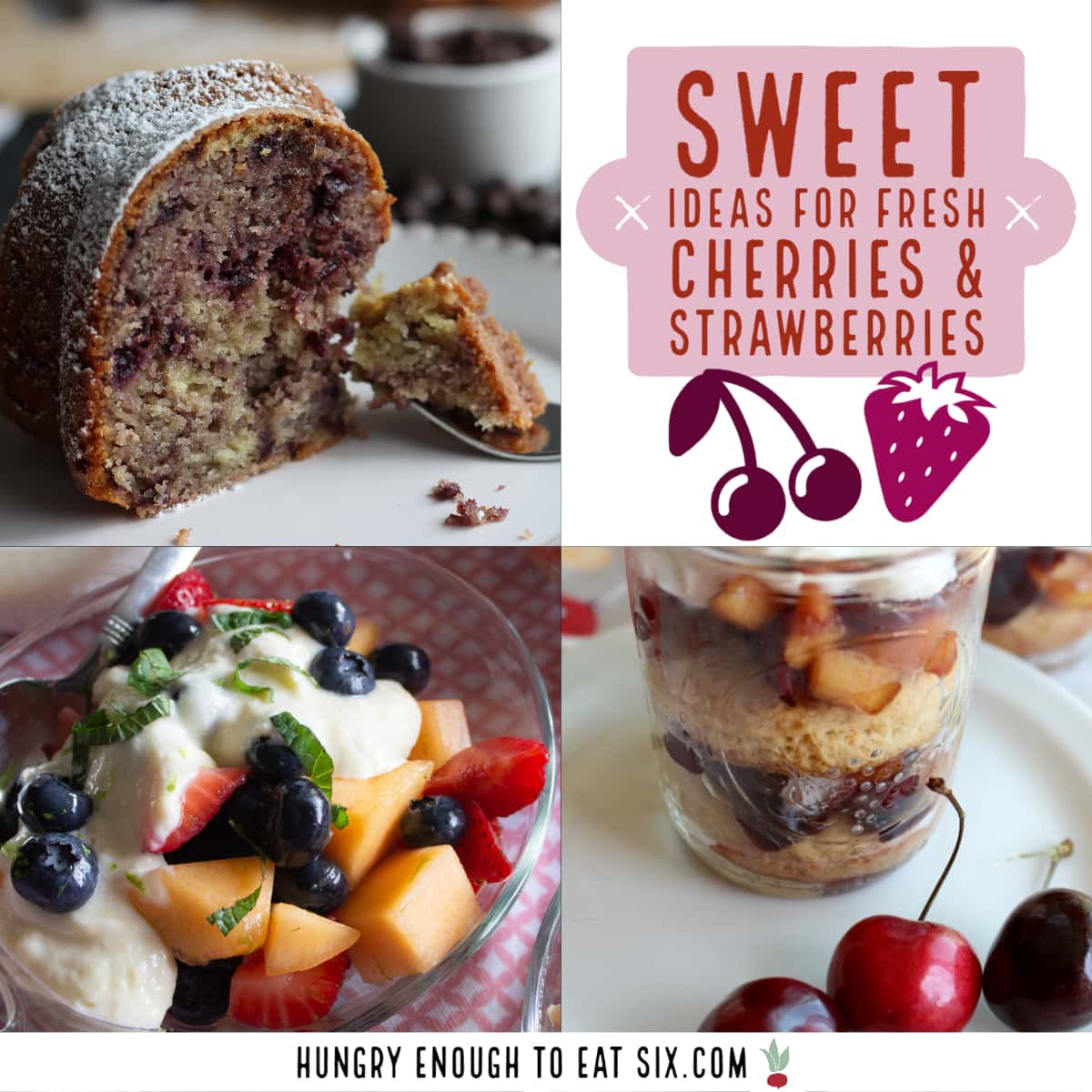
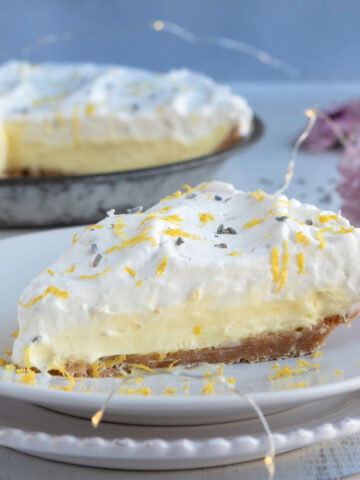
Michelle
I live in Las Vegas and I can never get my dough to work just right until this recipe. I do have a question though... can the dough be frozen? I use a crumble too on my apple pie and want to save the other half.
Nancy Mock
Hi Michelle, I’m so happy to hear that you’re having success with my pie crust dough! And yes: the dough can be frozen. Wrap it well and store it in the freezer for up to three months. It’s great to have on hand whenever the mood to make a pie strikes. Let it thaw in the fridge for a day, and then it will be ready to use. Thanks for this question and for trying my recipe!
Donna Armstrong
Hi
Thanks. I am going to try this all again. I would like to add pies to my cookie business. I've never had much luck with pie crust.
I am sort of a friend of your sisters. She is actually a friend of my sons.
Happy Holidays!
Nancy Mock
Hi Donna, if you get to try this pie crust recipe let me know what you think!